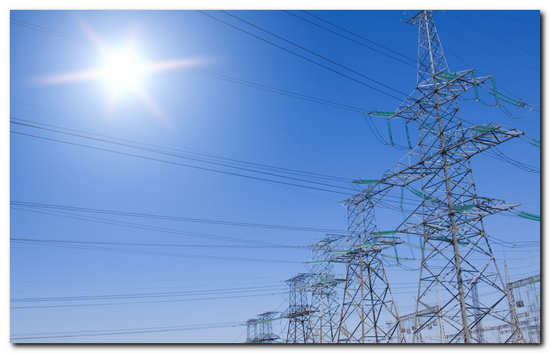Wriiten by Micheal Phelan, CEO at Endeco Technologies which is a national grid and eirgrid approved aggregator
Many in the pulp and paper sector may not be aware that there is a significant new revenue stream available to progressive and forward-thinking plants. It focusses on the use of energy, and how by turning the power down for a relatively short period each year in line with National Grid and EirGrid’s requirements, manufacturers can enjoy considerable financial rewards.
High Energy Consumption
Pulp and paper plants are intensive users of energy, with equipment such pumps, fans, pulpers, chippers, grinders, dryers commonplace in such facilities. Unfortunately this represents a problem in the UK, where only the most oblivious will be unaware that there exists a somewhat precarious electricity supply situation. According to a Guardian newspaper report earlier in 2016, UK electricity demand is expected to outstrip supply by over 40% within 10 years.

Many thought renewables would deliver the answer, but in reality the inflexibility of renewable energy sources in conjunction with the difficulty of controlling grid stability in real-time, represents a major challenge for grid operators. In simple terms, when generation and energy demand are imbalanced, a change of frequency in the grid system is created, which is made worse by the intermittent nature of wind and solar sources. The requirement for quicker grid balancing and frequency is why the National Grid (in the UK) and EirGrid and SONI in Ireland now offer a number of opportunities for energy-intensive businesses, with very lucrative rewards for those able to offer real-time response.
Ofgem, the industry regulator, is also on-board, recently laying out five priority areas of focus, central to which is a pledge to make the UK energy system more flexible. With this in mind, Ofgem is actively encouraging businesses to engage in demand-side response.
Demand-Side Response
Firm frequency response (FFR) and the new Dynamic FFR, as well as the forthcoming (2017) Enhanced FFR, are schemes that all form part of the system operators’ broad DSR (Demand-Side Response) suite of solutions. In essence, these schemes involve removing sufficient load from the grid to stabilise frequency.

To help boost uptake, the National Grid and EirGrid are offering those that participate the potential to earn extra income from assets by adjusting power consumption in real-time. As a result, grid operators can reduce the requirement for coal and gas-fired reserves to be ready to supply power at short notice.
This is where the pulp and paper industry can accrue significant financial rewards. To provide an indication, in the UK sums of up to £90,000 are currently achievable for every megawatt (MW) of average onsite energy consumption turn down. In Ireland, the latest scheme – DS3 System Services – also offers very significant sums per megawatt.
Any pulp and paper company expecting to endure weeks if not months of blackouts to see financial savings on such levels would be wrong. In the first instance, the requirement is for ‘turn-down’ not ‘turn-off’, and secondly, the sums stated are in return for around 10 (on average) ‘turn-down’ events per year, lasting for a maximum of just 30 minutes each. In total, this adds up to – on average - around 5 hours a year.
For those thinking there must be a catch, there isn’t. The grid operators are prepared to pay such high rewards as it is obliged to control frequency within the limits specified in the 'Electricity Supply Regulations', i.e. ±1% of nominal system frequency (50.00Hz) except in abnormal or exceptional circumstances. It must therefore ensure that sufficient generation and/or demand is reserved in automatic readiness to manage all credible eventualities that might produce frequency variations.
Virtual Power Plant
As every pulp and paper processing facility will have its own array of assets and requirements, comprehending and choosing the optimum DSR scheme is vital. With this in mind, partner companies known as aggregators provide the critical elements that enable participating companies to make the best selection and optimise returns.

Aggregators take a central role in this new power-balancing arena. In essence, they act as intermediaries between the Grid operators and large energy users. They create a ‘virtual power plant’ where the assets of hundreds of companies are aggregated. This provides a grid-balancing mechanism helps the system operators to deliver on their vision for a more sustainable, flexible power infrastructure.
All of this combines to help National Grid (UK) and EirGrid (Ireland) to minimise the operational costs of making the grid ‘smart’ because the aggregators deliver a technical solution to the challenge of grid balancing.
Essential Partnership
 From the point of view of the end user, an aggregator is an essential partner for any pulp and paper company that wishes to take advantage of the long-term lucrative opportunities. They take care of the necessary hardware and software installation, as well as the online monitoring and reaction systems, and the day-to-day running of the system.
From the point of view of the end user, an aggregator is an essential partner for any pulp and paper company that wishes to take advantage of the long-term lucrative opportunities. They take care of the necessary hardware and software installation, as well as the online monitoring and reaction systems, and the day-to-day running of the system.
All of this is offered without any capex requirement, with the aggregator instead taking a percentage of the scheme pay-out. As a point of note, the aforementioned sum per megawatt is the amount payable after the aggregator has taken payment.
Pulp and paper companies are in prime position to benefit from this offer. In this first instance, energy consumption is reduced on selected equipment after an audit of the plant, before energy strategies to reduce cost are adapted and agreed with the plant’s operations team.
The chosen aggregator will connect the manufacturer’s principal assets to its proprietary on-site optimisation platform, which enables the automated control of energy consumption via wireless smart sensors and actuators. One part of the aggregator’s job is to ensure pulp and paper producers are ready and able to turn down their energy use when the grid operators require it, and check that the response works correctly. Facilities employing an aggregator simply relax and concentrate on day-to-day business.
Aggregate to accumulate
The answer to the question of which aggregator is best depends on many factors. However, pulp and paper manufacturers should be mindful to only select a ‘National Grid Approved Aggregator’, and preferably one with hundreds of existing sites under its belt. A further vital factor is to choose an aggregator that offers a platform which can future-proof against better schemes being introduced. Response schemes are always likely to change over time and plants participating in the scheme must be technology-ready to access more financially attractive tariffs.
Ultimately, DSR schemes represent a no-risk route to generous additional income for pulp and paper manufacturers willing to help the UK better manage its challenging electricity requirements.
1.IDENTIFY: An approved National Grid or EirGrid aggregator will assess your available assets and calculate revenue potential.
2. DEFINE: Your aggregator will work with you to establish parameters for response, define constraints and operational priorities.
3. IMPLEMENTATION: Your aggregator will install and configure its technology platform to connect your energy intensive assets. This is often at no cost to the end user*.
4. RESPOND: Once you’re connected, you’re ready to respond when required, without risk or impact on your productivity.
5. EARN: You start receiving monthly payments from the energy market.
* Endeco Technologies makes no charge for the implementation of the technology platform. Other aggregators might take a different approach.
